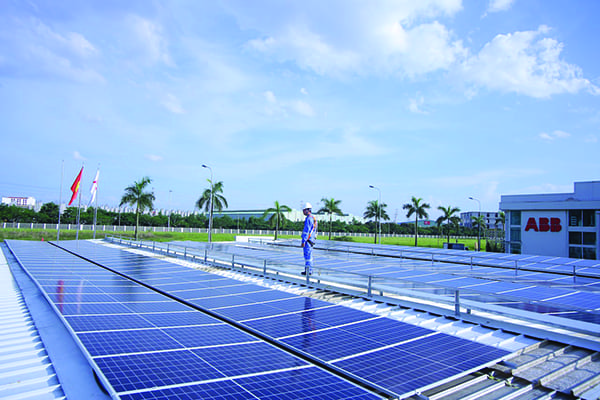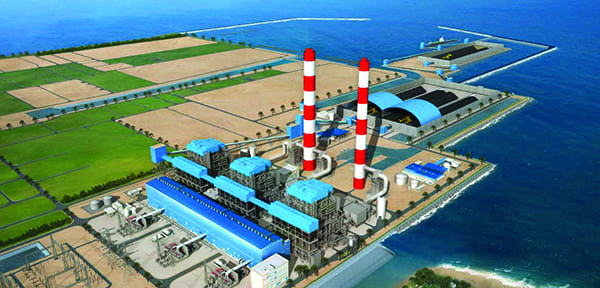Vietnam Supports Solar and More Coal Generation
Credit to Author: POWER| Date: Sat, 01 Jun 2019 00:00:00 +0000
The first solar power plant licensed to operate in Vietnam came online in late April, another signal of the country’s increasing reliance on renewable energy. But analysts forecast that coal-fired power generation will be needed to satisfy the country’s demand for electricity, as Vietnam’s growing economy challenges the national power grid to keep up.
Construction of the Mo Duc Solar Power Plant, with generation capacity of 19.2 MW, was idled for more than three years after lead investor Thien Tan Group had trouble acquiring the land needed for the $38.7 million project. The group also was forced to wait on government approval of solar power prices. It took just three months to finish the project earlier this year after the necessary approvals.
 |
1. Global energy company ABB was chosen to help develop more than 20 solar projects in Vietnam in 2019. The projects range from this 75-kWp solar power installation at ABB’s factory in Bac Ninh, to utility-scale solar farms across the country with more than 2 GW of generation capacity. Courtesy: ABB |
The Mo Duc plant, in Quang Ngai province, includes 53,000 solar panels from U.S.-based FTC Solar. The Vietnamese government in November 2017 said it would support development of renewable energy projects (Figure 1), which has led to a slew of solar farms mostly in central Vietnam. Government data shows there are 29 projects in Ninh Thuan province, with another 10 in Khanh Hoa. The country’s Ministry of Industry and Trade has said more than 120 solar projects country-wide have been approved, with additional generation for the national grid of 6.1 GW by 2020, and 7.2 GW by 2030. Another 221 projects, with estimated generation capacity of 13 GW, are awaiting government approval, according to the ministry. When the government initially issued its 2017 decree, it had a target of 850 MW of solar generation by year-end 2019, and 4 GW by 2025.
Vietnam’s economy is growing, and government officials have said they expect demand for electricity will grow about 8% year-over-year across the next 10 years. Government data shows Vietnam receives most of its electricity from hydropower—more than 37%—and coal-fired power, which accounts for more than 34%. The country’s most recent Power Development Plan VII (PDP 7) detailed about $148 billion in investments to increase power generation and upgrade the national grid, with about $40 billion earmarked for the period from 2016 to 2020. Three-quarters of that was directed toward generation projects, with the rest directed toward grid development. The PDP 7 estimates coal generation will make up 53% of the country’s power mix by 2030, with 55.3 GW of coal-fired capacity being installed over the next decade, in addition to increased generation from non-hydro renewables. The government also plans to increase imports of liquefied natural gas (LNG) to fuel gas-fired power plants.
 |
2. A current coal-fired project in Vietnam is an expansion of the Vinh Tan 4 plant east of Ho Chi Minh City, expected to come online in December. The expansion is expected to add 600 MW to the national grid. ABB’s Symphony Plus automation system will control the plant’s boiler, turbine generator, and auxiliaries. Courtesy: ABB |
Analysts agree that Vietnam will need more coal-fired power (Figure 2) to meet its growing power demand. A March 2019 report from Fitch Solutions, a business intelligence company that studies business markets including energy, said coal generation growth is expected “to increase rapidly over the next decade and to dominate Vietnam’s power sector expansion. We forecast coal-powered generation to grow at an average of 10.1% [year-over-year] to reach about 50.5% of the power mix by 2028.” The Fitch report said coal will grow “due to relatively slow supply growth from traditional sources of energy such as hydropower and natural gas, with the government set to turn to coal to meet the surge in demand for power.” Fitch said “we believe that coal will remain the more attractive option over the next decade as it is cheaper and more reliable at present.”
Funding for new plants could be problematic, though, as global banks reduce financing for coal projects. Oversea-Chinese Banking Corp. (OCBC), the second-largest lender in Southeast Asia, told Bloomberg in mid-April that two coal-fired plants in Vietnam will be the last the bank supports as it increases funding for renewable projects.
“We won’t do any new coal-fired power generation plants in any countries, except for the power projects that we are already in, or we have committed to,” Samuel Tsien, CEO of OCBC, told Bloomberg. “We hope that by doing this, we are encouraging the governments to do facilitating, arrangements for the countries to move from coal to renewable.”
The Asian Infrastructure Investment Bank, based in Beijing, in late April reiterated its move toward renewable energy, with Joachim von Amsberg, the bank’s vice president, telling National Public Radio, “In most countries today, it doesn’t really make financial economic sense anymore to invest in coal-fired power plants.”
A February report from the Institute for Energy Economics and Financial Analysis, a Cleveland, Ohio-based group, notes that as many as 100 large global lenders have backed off their investment in coal mines and coal-fired power plants over the past five years. An October 2019 study from Carbon Tracker, a London, UK-based think tank, said with costs for renewable power continuing to fall, Vietnam’s new solar plants may be cheaper to operate than the country’s coal plants by 2027.
But even with some banks ending their financing of coal projects, China is still a major investor in Vietnam’s energy sector. The Hanoi-based environmental group Green Innovation and Development Centre in a recent report said Chinese investors are involved in 15 operating coal plants in Vietnam, along with another six under construction, and two more being developed. And China is not the only country investing in Vietnam. Most recently, Japan Bank for International Cooperation in mid-April signed a $1.2 billion project loan agreement with Vietnam’s Van Phong Power Co. Ltd., to develop the two-unit, 1,320-MW Van Phong 1 coal-fired power plant.
—Darrell Proctor is a POWER associate editor (@DarrellProctor1, @POWERmagazine).
The post Vietnam Supports Solar and More Coal Generation appeared first on POWER Magazine.